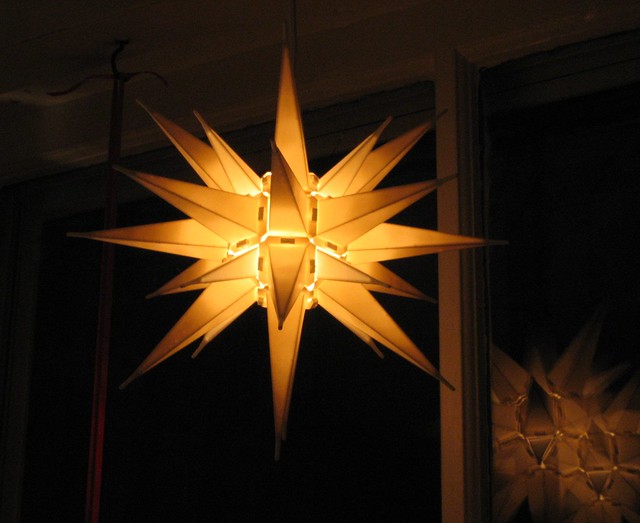The History of Moravian Stars
A special type of star decoration seen around the world is the Moravian Star, also known as the 'Herrnhuter Stern' (Herrnhut Star) or Advent Star. The star represents the Star of Bethlehem which led the Magi/Wisemen to the baby Jesus. Moravian stars commonly have 26 points, although there are versions with 20, 32, 50, 62 and 110 points!

They were first created in a Moravian boy's boarding school in Niesky, Germany in the mid 1800s as part of a lesson in geometry. The children made the stars in school and then took them home as Christmas decorations. The original stars were red and white. The red representing the blood of Jesus and white representing purity.
The stars were first commercially made and sold in 1897 by Pieter Verbeeck, who had been a school boy at the Moravian school in Niesky. He invented a way of making the star with points attached to a metal frame and sold the stars and instructions on how to make them in his paper and music store in Herrnhut. In 1925 Peter's son Harry founded the Herrnhut Star factory. The stars were designed so they could be easily posted and assembled by people when they received them. You can find out more about the history of the star and the Herrnhut Star factory on their website...
The Moravian Star was soon used by the Moravian Church, around the world, as a symbol for Advent, Christmas and Epiphany. The star is traditionally hung at the start of Advent and is taken down at Epiphany (6th January), although sometimes they're left up until Candlemas (2nd February).
Moravian Stars are still used in Moravian Churches as well as by other churches and buildings around the world, especially where the Moravian Church has sent missionaries. The stars are also now popular decorations in houses, even if people don't know the history of the star!
The Christingle is another Christmas decoration and tradition that started in the Moravian Church.
